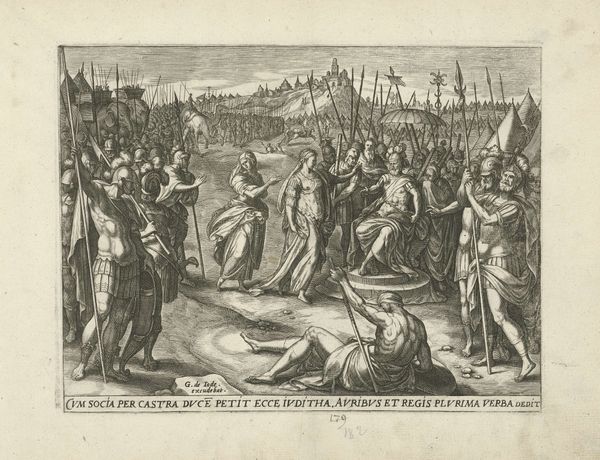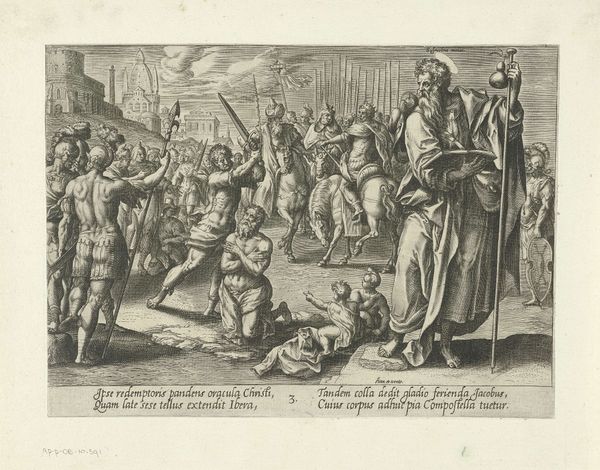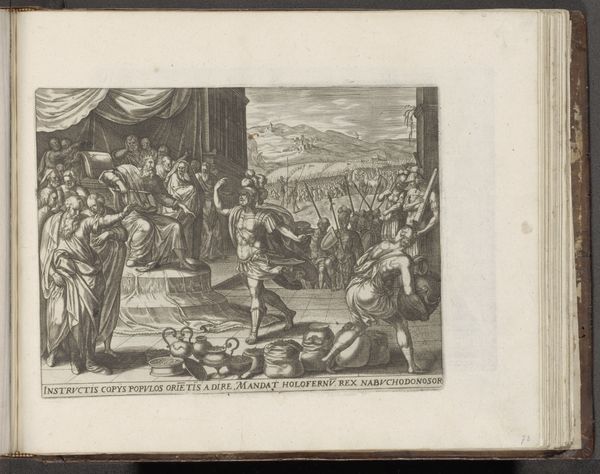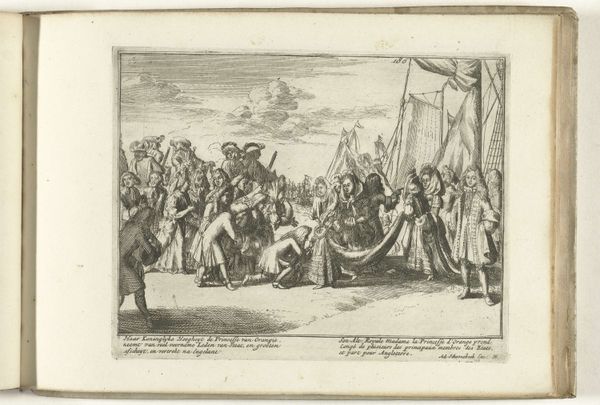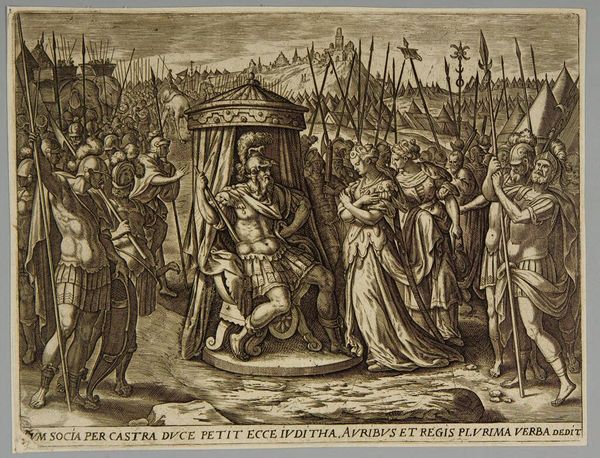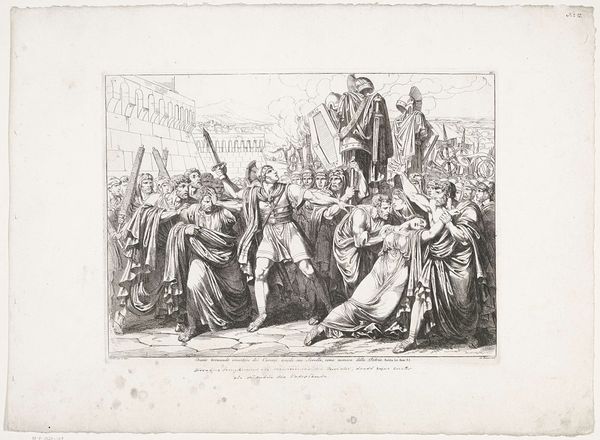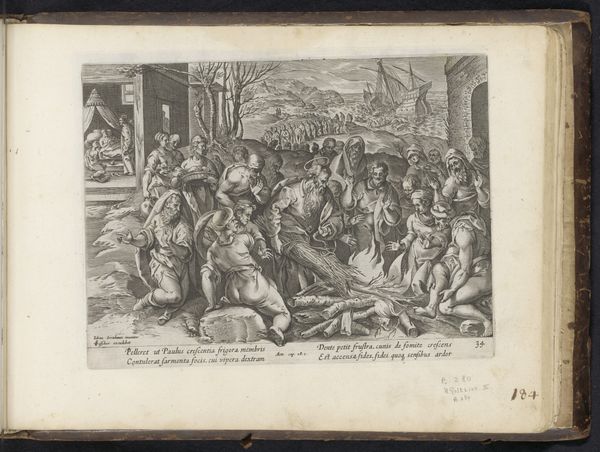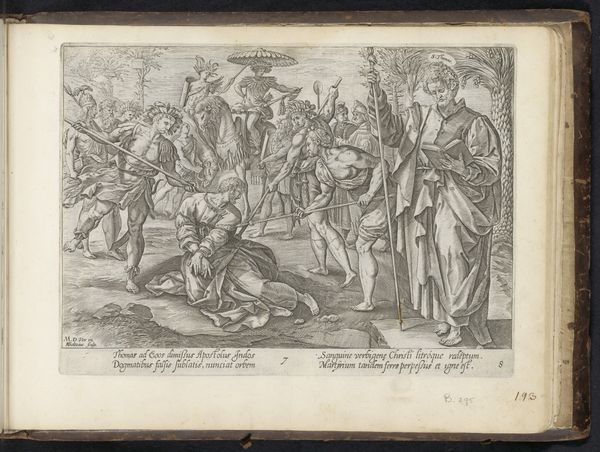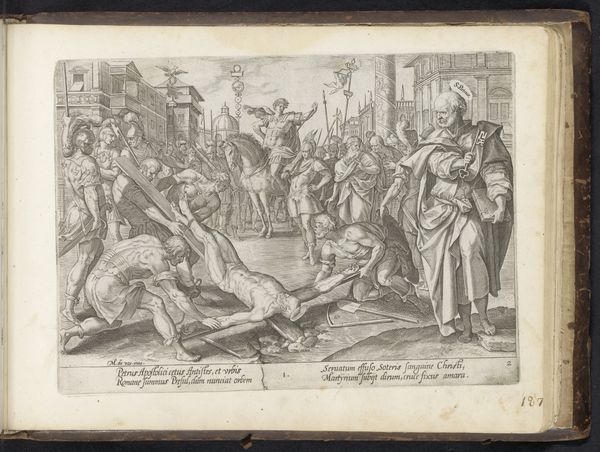
engraving
#
figuration
#
coloured pencil
#
history-painting
#
italian-renaissance
#
engraving
Dimensions: height 200 mm, width 261 mm
Copyright: Rijks Museum: Open Domain
Curator: Here we have Jan Snellinck's "Judit gepresenteerd aan Holofernes," an engraving dating back to 1579, currently housed in the Rijksmuseum. It captures a pivotal scene from the Book of Judith. Editor: It strikes me as meticulously crafted, almost surgically precise in its depiction of figures and detail, given the medium. A definite mood of tension pervades the whole scene, what with the surrounding soldiers and Holofernes himself on his throne. Curator: Absolutely. Judith's presentation is rife with symbolic significance. The contrast between her serene composure and the brute power embodied by Holofernes, who is the Assyrian general, establishes a narrative loaded with political resistance. The iconographic choice of portraying Judith here draws on centuries of understanding of her story as defiance against tyranny. Editor: Exactly! And Judith isn't just any woman; she is strategically using her agency to liberate her people. Consider the visual dynamics – the gaze of every soldier fixated on her, Holofernes's throne acting as a stark patriarchal power symbol. The composition actively engages the viewer, implicating them in this complex interplay of power, seduction, and, ultimately, liberation. It speaks volumes about gendered power imbalances then, and still today. Curator: Moreover, we can consider Holofernes in his historical context; the iconography employed speaks directly to Netherlandish concerns during the 16th century about the abuse of absolute power as many Northern European nations were caught in constant battles for independence from greater European empires. It's about cultural identity. Editor: The layering of meaning through Judith herself as a figure allows the artist to play on ideas related to colonialism, conquest, and religious strife of that time. She isn’t just delivering herself to Holofernes; it is her strategy, but a deeply dangerous one for a woman in a patriarchal society. Her perceived purity underscores how deeply she understands power, allowing her to reclaim autonomy through it. Curator: It is this continuous re-emergence of certain symbolic structures within these religious themes that resonates so greatly still. Judith represents not merely resistance, but also an idealised and potentially even destabilizing version of womanhood. Editor: Yes. This engraving doesn't merely illustrate a biblical story; it galvanises critical perspectives about power dynamics, challenging us to rethink the meaning of visual art’s cultural impact. Curator: A truly impactful lens on faith, resilience, and artistic skill! Editor: Couldn't have said it better myself. The enduring resonance of Snellinck’s work continues to spark dialogues on the nuances of art's relationship with activism, especially regarding power.
Comments
No comments
Be the first to comment and join the conversation on the ultimate creative platform.
